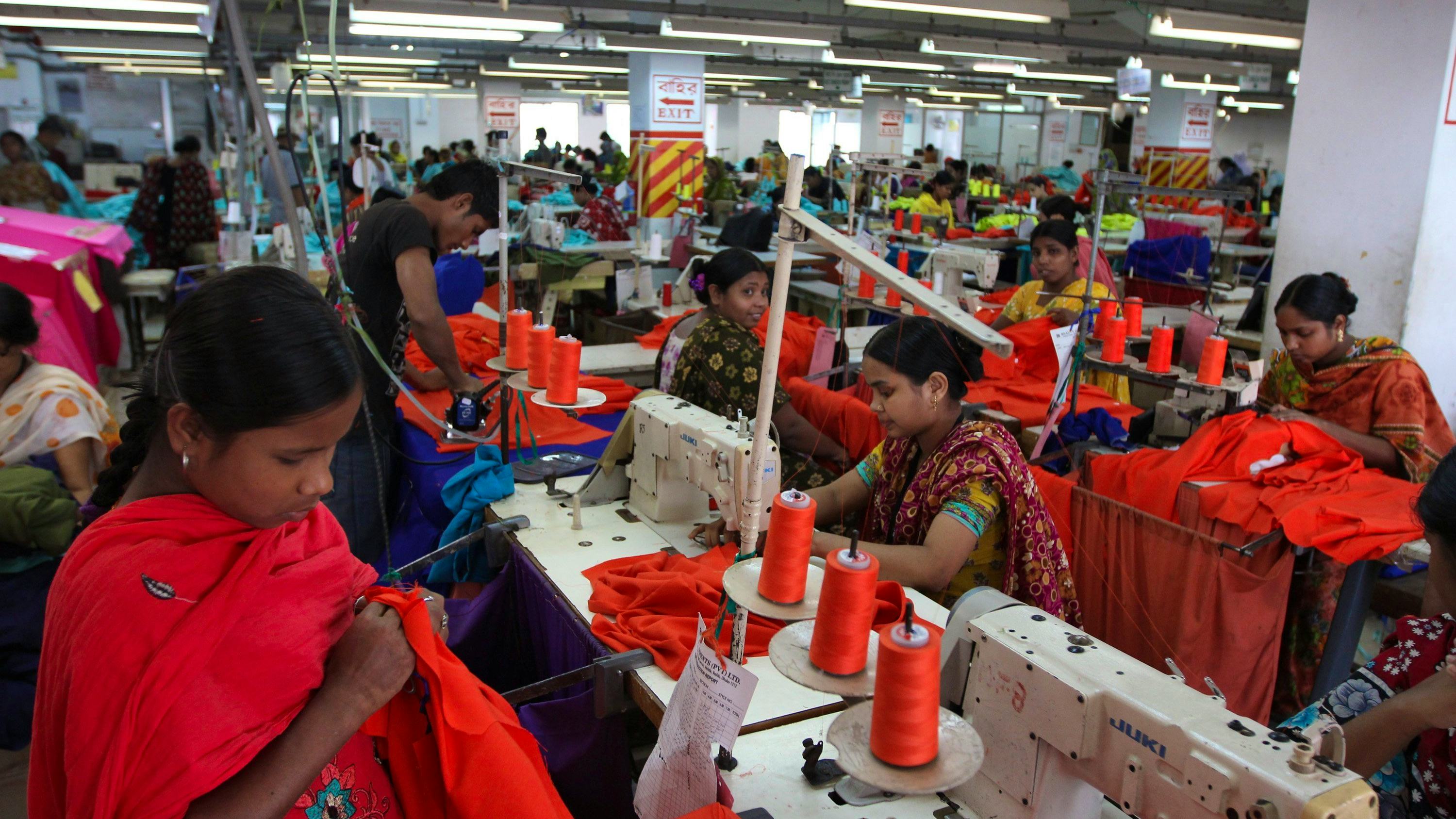Bangladeshi women find hardship, but also freedom, in sewing clothes

DHAKA, Bangladesh — Mukhta Mollah pushes red cloth through a sewing machine. She is making women’s shirts that will be sent to America. She works six days a week in this hot and sweaty factory. Each workday is eight hours or more.
Today, like every day, she will try to make 1,000 shirts.
More than 350 women sewing clothes sit in rows in this huge factory. Bright lights buzz and blink above them. Huge loud fans push around the hot air, which smells like new clothes.
Mollah works for less than 30 seconds on each shirt. She has gotten used to the rough life working at the factory.
Away From Home Village
Mollah knows that she won’t get rich. She sends nearly half of her $20-a-week paycheck home to her family. But she’s thankful that the money she makes has allowed her to escape her home village. Her schoolgirl friends are still stuck there.
All of them were married before age 16. They all have children of their own. They all live with their husbands’ families. They must get permission from their mothers-in-law to leave the house.
“For them, it’s a cage,” said Mollah, 19. “My life is much better than theirs because they have no freedom.”
Bangladesh’s clothing factories have a reputation for being difficult and sometimes deadly. An eight-story factory collapsed last April, killing more than 1,100 workers. Six months earlier, a factory fire killed 112 people who could not escape because their bosses had locked the doors to keep them working.
Workers in Bangladesh face terrible conditions. They often work 80 hours a week and they fear terrible accidents. But the work is still a good opportunity for women in this poor, traditional Muslim society. There is not much else for them to do.
A Two-Bedroom Apartment
These jobs allow teenage girls to grow up with some independence, said Sajeda Amin, who studies the factory workers. Still, she added, it’s not as good as getting a college education.
Even labor activists in Bangladesh and the United States who fight for the workers’ rights agree that the clothing factories have given young women opportunities to shape their own lives.
Recently, workers held a large protest in the capital of Bangladesh. The factories now have to pay workers $68 a month. That is about 33 cents per hour. But the clothing workers still need more rights, their supporters say.
It’s lunchtime, and Mollah leaves the factory with most of the other 350 workers for the hourlong break. She meets up with the three other young women she lives with.
Their two-bedroom apartment is two blocks away. The building is concrete. The windows have metal bars on them, but no glass.
The four women all live in one small room. Two sleep on a double bed, and two sleep on a pad on the concrete floor. Every other week they switch places. The rent is $45 a month. They each pay their share.
"I Like It Here"
Kanchi Hazi is one of the women. Hazi left her home village seven years ago to take this factory job. She sews pockets on shirts. She is happy to work as many hours as she can get.
“I like it here.” she said. “I make my own decisions. I can earn money and help my family.”
By working extra hours, she can make $78 a month. She sends half of it home to help her poor family.
Every few months, she rides the bus back to her village to visit her family. Some villagers support her decision to work. They say she is making good money and helping her family. Others don't like it. They say it is not proper for a young single woman to work alongside men.
But when she gets off the bus, younger village girls dance around her. “They see me as a role model,” Hazi said. “I can do whatever I want. I can enjoy myself. I have freedom.”

